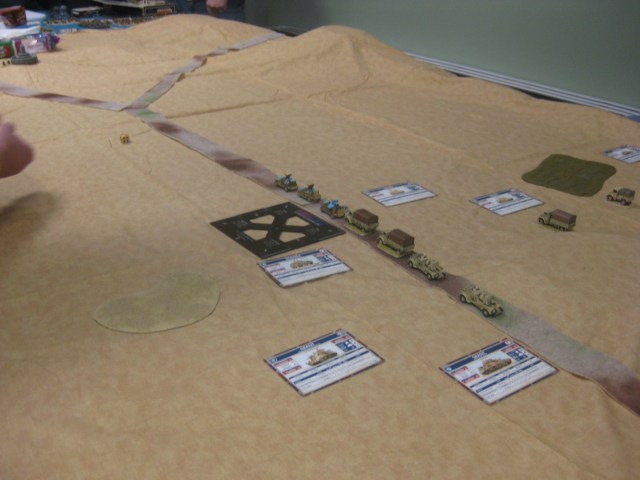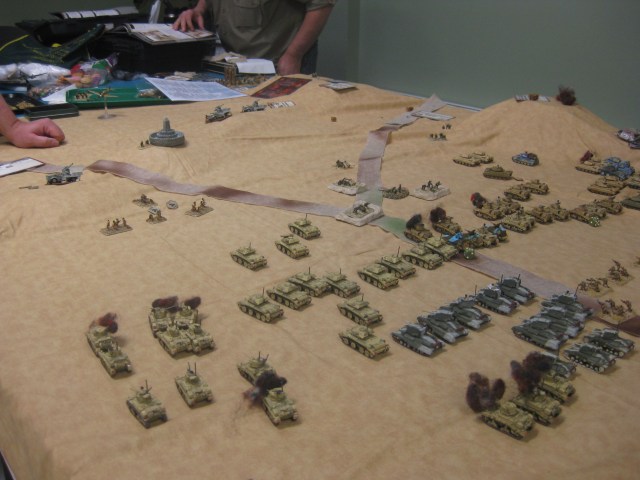
Background
Operation Crusader was a military operation during the Second World War by the British Eighth Army against the Axis forces in North Africa between 18 November and 30 December 1941. The operation was intended to relieve the 1941 Siege of Tobruk; the Eighth Army tried to destroy the Axis armoured force before advancing its infantry. The plan failed when, after a number of inconclusive engagements, the British 7th Armoured Division was defeated by the Afrika Korps at Sidi Rezegh.


Lieutenant General Erwin Rommel ordered German armoured divisions to the Axis fortress positions on the Egyptian border but failed to find the main body of the Allied infantry, which had bypassed the fortresses and headed for Tobruk. Rommel had to withdraw from the frontier to Tobruk and achieved some tactical success in costly fighting. The need to preserve his remaining forces from destruction prompted Rommel to withdraw his army to the defensive line at Gazala, west of Tobruk and then all the way back to El Agheila. It was the first victory over the German ground forces by British forces in the war.
https://en.wikipedia.org/wiki/Operation_Crusader


The Game
Set Up: The terrain was quite straight forward. A lot of open desert, with a couple of ridges and a road up the middle. The ridge on the right table edge was unpassable. All others were gentle rises and had no effect on movement. Any minor additional terrain required a cross check. All axis forces were deployed hidden and would only be shown if they decided to fire or if the British entered within 16″. The British would end the bottom table edge. The axis could set up anywhere from the center table and back. All axis units would be dug in.


Victory Conditions: The axis would get 3VP for every platoon of British they destroyed. The British would get 1Vp for every platoon they destroyed, 10VP for having an artillery observer on the main ridge at the end of the game and 25VP for exiting off the right road.


British Forces: The British force included two Honey companies, two Crusader II companies, two Cruiser Mark IV companies, four Infantry companies (each of two platoons and a MMG platoon, one 76mm mortar battery, two 25lb sections and one 40mm AA battery.

Axis Forces: The axis force consisted of one M13/40 company, one Bersiglieri company (of four platoons), two German infantry platoons, one German JgPz-I platoon, two italian 81mm mortar batteries, one 105mm artillery battery, two 102 AT truck sections. In addition, they would receive a single Stuka attack.


With the large amount of forces, the game was pretty straight forward. The British bashed forward with all their tanks in the lead and slowly uncovered and cleared the Italian and German units. The British infantry followed behind (mostly in their trucks). The British artillery pounded any concentrations. It was a total grindfest! The British suffered from some miscommunication between players that lead to a few mis-timed assaults and blocked fire. The game lasted six turns, but had to be called early. At the point of stopping, the British had cleared all forward line axis infantry and eliminated all Italian and German armor support. The asix was left with a toe hold blocking position to hold the road exit and a second line of Italian infantry in position to redeploy on the ridge. It was clear that the British would be able to break through with their huge advantage in forces. However, while axis losses had been high, they took out a disproportionate number in British tank platoons. The game ended in an unhistorical axis victory!


- Mantueffel
